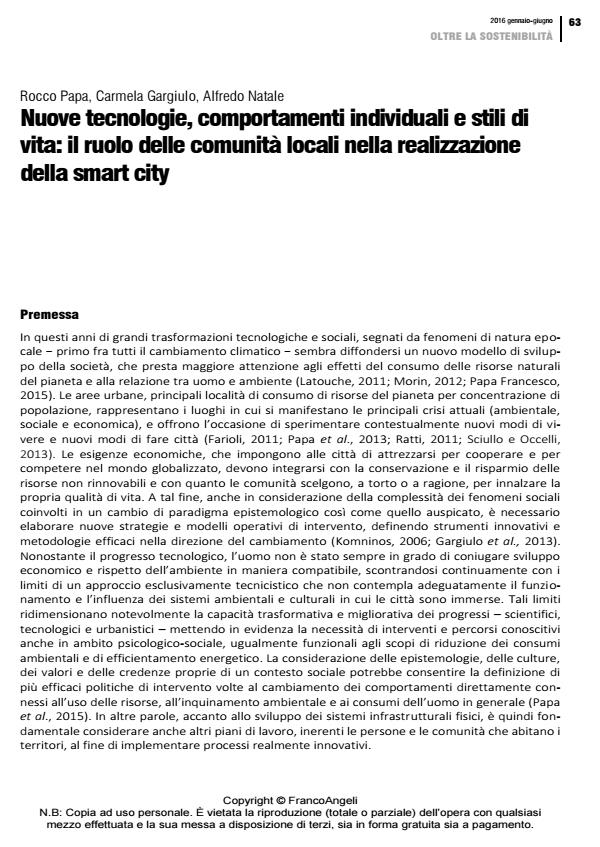New technologies, individual behaviors and life style
Journal title CRIOS
Author/s Rocco Papa, Carmela Gargiulo, Alfredo Natale
Publishing Year 2016 Issue 2016/11
Language Italian Pages 10 P. 63-72 File size 1444 KB
DOI 10.3280/CRIOS2016-011006
DOI is like a bar code for intellectual property: to have more infomation
click here
Below, you can see the article first page
If you want to buy this article in PDF format, you can do it, following the instructions to buy download credits

FrancoAngeli is member of Publishers International Linking Association, Inc (PILA), a not-for-profit association which run the CrossRef service enabling links to and from online scholarly content.
The paper deals with demands of urban regeneration and local communities aspirations, drawing on the notion of smart city. It offers a trans-disciplinary methodological framework, mobilizing social and technology studies, to support the smart city as a new alliance between environmental sustainability and human activities. The paper is based on a research work carried out by the authors in Naples about life styles and energy consumption reduction strategies
Rocco Papa, Carmela Gargiulo, Alfredo Natale, Nuove tecnologie, comportamenti individuali e stili di vita: il ruolo delle comunità locali nella realizzazione della smart city in "CRIOS" 11/2016, pp 63-72, DOI: 10.3280/CRIOS2016-011006